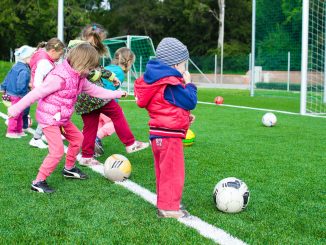Special needs children, such as children dealing with autism, face many challenges when it comes to fitness and exercising. We already know that exercising is challenging on its own; however, special needs children have specific motor pattern challenges that make it difficult for them to coordinate movements.
Physical activities for special needs children can incorporate rhythmic sessions that engage large muscles. Such exercises may include running, walking, and cycling. However, determining the type of exercise routine that fits special needs children highly depends on the children’s initial fitness level, as well as their ability to cope with exercise programs in general. Just keep in mind that even when cognitive abilities seem delayed in a child dealing with autism for instance, that child can still successfully and enthusiastically engage in regular exercise.
Children with special needs can benefit greatly from exercising. Whether you have special needs or not, exercising has many advantages. Not only does exercising help increase strength, endurance, and balance, it also helps decrease stress level, blood sugar, cholesterol, and blood pressure. As a result, everyone can benefit from fitness; not just the average person, but also people with special needs.
Example of an exercise session designed for special needs children
One way of getting special needs children to take interest in exercising, is to make the exercises fun and relaxing at the same time. To achieve this goal, try incorporating movement, music, and yoga in the children’s fitness routines. These activities can help special needs children reduce stress and energy level, lower anxiety, and improve their attention and social skills.
Segment the exercise routine into two major sessions. The first half of the session (which can last 15-20 minutes), may include music and movement. Play a song that captivates their attention, and encourage them to engage in sequences of snapping fingers, patting their belly and clapping their hands. You can also include obstacle courses and running in this session, but make sure they are easily achievable.
Once the 20 minutes are over, slowly transition the children into the yoga portion of the exercise routine. Yoga doesn’t have to deal with complex posturing or any flexibility pre-requisites. During the yoga session, the children will do traditional postures such as cow, cat, dog, cobra. Yoga will help them improve body awareness, strengthening, and self-esteem. Moreover, yoga will improve their attention and get them ready to learn textbook materials.
Social benefits of exercising
Getting special needs children to exercise in a group setting, is an excellent way to develop and increase their social skills. Connecting these children with others who have similar needs, helps all of them foster their own support network. Regardless of who you are, or what your limitations are, exercising regularly is the building block to better health and long life; special needs children are no different in that respect.




